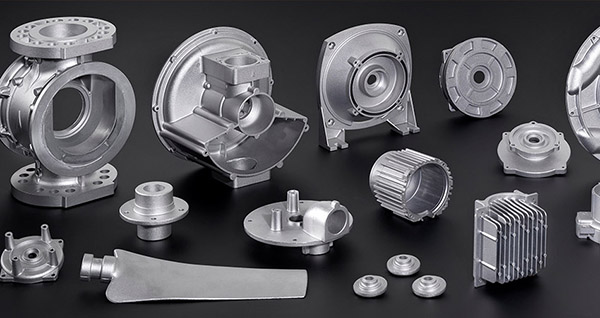Die casting is a cost-effective way of producing huge quantities of complex-shaped products accurately using light metals. The melted metals are subjected at a high speed in a water-cooled metal die or mold using the injection process.
The liquified metal solidifies when it comes in contact with cold water. Once the process of solidification and mold casting is completed, the product is then ejected through the ejector pins. The die is exposed to air, then sprayed with a lubricant. The molding tool is closed again and injected with liquified metal again into the die as completion of the process.
The type of die casting process used will depend on the kind of industry you have. For aluminum alloy casts, for instance, it applies either high pressure die-casting or gravitational process just like in the automotive industries. One of the advantages of this process is having smooth surface finishes, fine, intricate details, and close dimensional tolerances.
Below are the other types of casting processes used in the production industry.

aluminium die casting process*
Types of Die Casting Processes
All types of casting processes have the same goal to cast a mold by injecting a liquified metal.
Hot-Chamber Casting Process
This process is sometimes called hot casting or gooseneck casting. It is one of the commonly used casting processes. With this process, the cylinder chamber is immersed completely in the liquified metal bath. Then the molten metal is drawn into the die cavity using a gooseneck metal feed system. As compared to other types, this process has higher rates or part production.
Although the process is fast and convenient, it also increases corrosion susceptibility. Because of this, the hot casting process is used only for production that uses metals with high fluidity and low melting points. The metals that you can use for the gooseneck casting process are magnesium, copper, lead, and zinc.
Cold-Chamber Casting Process
If there is hot, of course, there is also a cold-chamber casting process. The method is almost the same with the hot-chamber, the only difference is that it does not undergo the immersion in the liquified metal bath. This process focuses on reducing corrosion and not on production efficiency. The liquified metal is either hand-ladled or automatically directed into the injection system.
If the process is too hot for the applications, the cold-chamber process can be a good alternative. The process includes the casting of metals with high melting temperatures like aluminum alloys and aluminum.
Low-Pressure Casting Process
It is a process that is ideal for aluminum parts that are symmetric on an axis of rotation. Car wheels, for instance, are usually designed using low-pressure die casting. In this process, the mold is positioned vertically on the molten metal bath and is attached using a riser tuber. If the chamber is pressurized, the metal is directed upward and then in the mold. Since it does not involve feeders, this process provides high casting results.
The Squeeze Casting Process
This process was developed as a solution for casting allows and metals with minimal fluidity. The liquified metal fills the open die, then squeezed closed, to push the metal into the recessed parts of the molds. The products using this process is quite dense and is a good process for subsequent heat-treating. It is associated with liquified aluminum and is utilized in applications that require fiber reinforcement.
The Vacuum Casting Process
This process is quite a new die casting process that provides strength and low porosity. It is somewhat similar to low-pressure casting, except the position of the die-cast mold and liquified metal bath are reversed. Served as the vacuum is the cylinder chamber that pushes the liquified metal into the cavity. The gas inclusions are reduced as well as the design turbulence. This process is very beneficial in applications designed for post-casting heat treatment.
Semi-Solid Die Casting Process
This process of casting is sometimes called Thixo-forming. It is somewhat similar to vacuum casting with low porosity and maximum density. The tool cuts the workpiece into smaller slugs and subjected to heat. After reaching the transition phase from solid to liquid that results in slushy texture, the shot sleeve forces the material in the mold cavity, then hardens. This process improves precision. Aluminum and magnesium alloy are both non-ferrous metals that are usually used in the semi-solid casting process.
Final Thoughts
If you are looking for an effective manufacturing process in producing parts, die casting process is the best. It is recommended for the production of parts with sharp definition and accurate dimensions in huge quantities. You don’t have to worry about the cost as it will not cost you that much. The die casting process has increased its speed and productivity.
Reference
*Image from https://came-italy.com/
